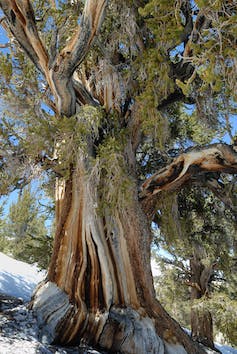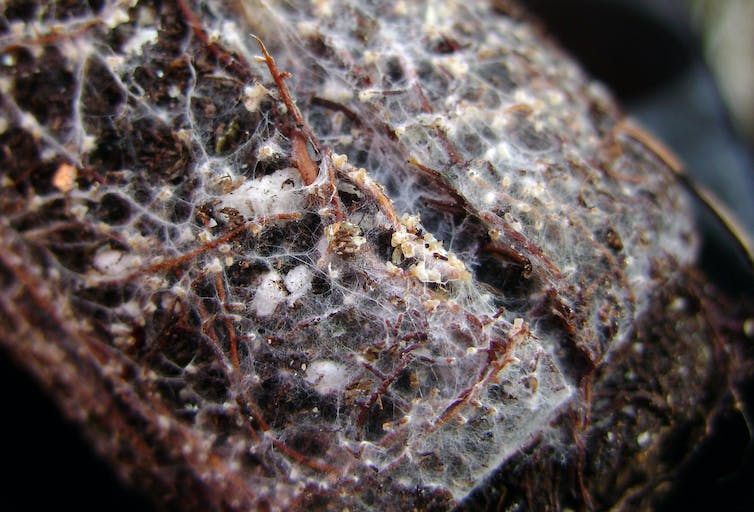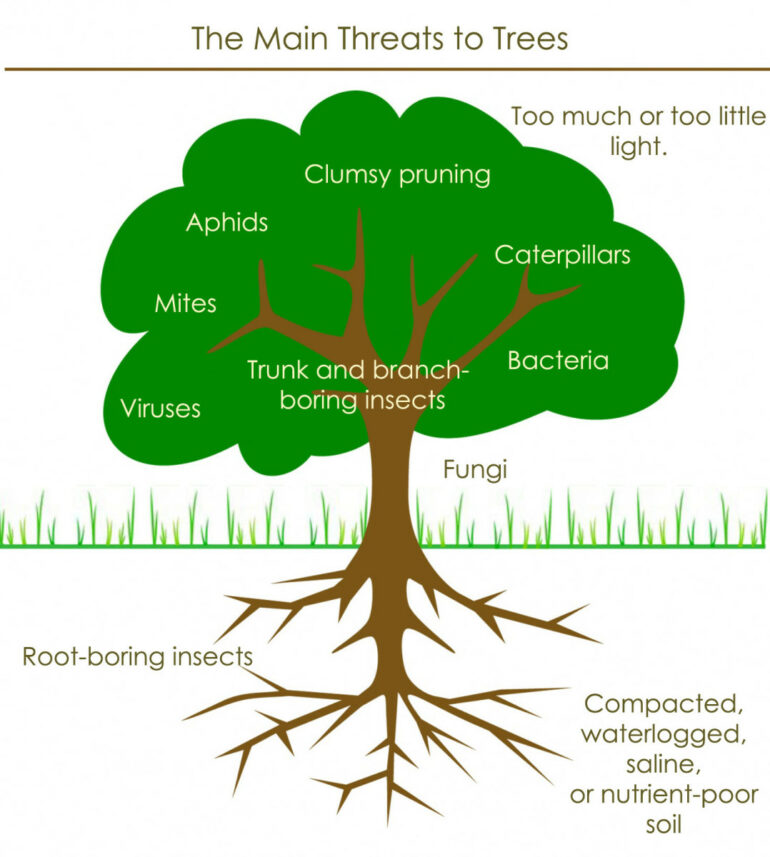
Curious Kids is a series for children of all ages. If you have a question you’d like an expert to answer, send it to [email protected].
How and why do trees die? – Anish K., age 11, Boston, Massachusetts
Trees can die suddenly or quite slowly.
Fire, flood or wind can cause a quick death by severely damaging a tree’s ability to transport water and nutrients up and down its trunk.
Sometimes a serious insect attack or disease can kill a tree. This kind of death usually takes from a few months to a couple of years. Again, a tree loses its ability to move water and nutrients, but does so in stages, more slowly.
A tree can also die of what you might call old age.
I am a scientist who studies trees and the web of living things that surround them. The death of a tree is not exactly what it seems, because it directly leads to new life.
Different trees, different life spans

An ancient bristlecone pine (Pinus longaeva) in Patriarch Grove in California’s White Mountains.
Nicholas Turland/flickr, CC BY-ND
Trees can live an incredibly long time, depending on what kind they are. Some bristlecone pines, for instance, are among the oldest known trees and are more than 4,000 years old. Others, like lodgepoles or poplars, will have much shorter life spans, from 20 to 200 years. The biggest trees in your neighborhood or town are probably somewhere in that range.
You’ve probably noticed that different living things have different life spans – a hamster is generally not going to live as long as a cat, which isn’t going to live as long as a person. Trees are no different. Their life spans are determined by their DNA, which you can think of as the operating system embedded in their genes. Trees that are programmed to grow very quickly will be less strong – and shorter lived – than ones that grow very slowly.
But even a tough old tree will eventually die. The years and years of damage done by insects and microscopic critters, combined with abuse from the weather, will slowly end its life. The death process may start with a single branch but will eventually spread to the entire tree. It may take a while for an observer to realize a tree has finally died.
You might think of death as a passive process. But, in the case of trees, it’s surprisingly active.
The underground network
Roots do more than anchor a tree to the ground. They are the place where microscopic fungi attach and act like a second root system for a tree.

Some fungi look like fragile spiderwebs, but these tiny tubes act like superhighways underground.
André-Ph. D. Picard, CC BY-SA
Fungi form long, superfine threads called hyphae. Fungal hyphae can reach much farther than a tree’s roots can. They gather nutrients from the soil that a tree needs. In exchange, the tree repays fungi with sugars it makes out of sunlight in a…



